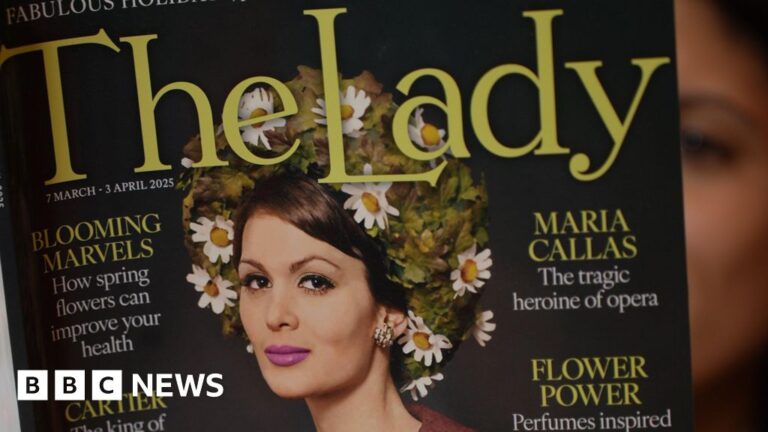Media Correspondent
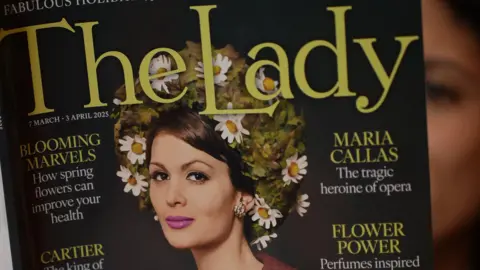 BBC
BBCThe Lady, Britain’s longest running women’s magazine, has formally announced that it has ceased publication.
The magazine is famed for its etiquette advice and adverts for butlers, nannies and discreet liaisons with well-heeled 60-somethings.
In a statement, the publishers confirmed recent media reports that the April edition of the magazine will be the last, but added the website with its jobs board and recruitment agency will continue.
Here’s a look back at its place in, and impact on, British culture over 140 years.
The ‘whole field of womanly action’
The Lady was established in 1885 by Thomas Gibson Bowles, as a magazine for gentlewomen, a weekly guide to navigating the social minefield of well-to-do British life.
Its very distinctive character was affectionately lampooned by PG Wodehouse. In his Jeeves stories, Bertie Wooster is briefly employed by a magazine called Milady’s Boudoir, which was housed “in one of those rummy streets in the Covent Garden neighbourhood”.
The real Lady Magazine just happened to be in Bedford Street in Covent Garden.
The Lady’s fame owed much to its advice to women on the mysteries of the British class system. In 1936, for instance, its readers were given an update on the acceptability of novels.
“The reading of fiction, not long ago thought deplorable by nearly all social workers, is now becoming almost a virtue,” it noted.
It’s first edition began with an explanation that its objective was to cover “the whole field of womanly action”.
Almost all of it was written by a man, Thomas Bowles, using various aliases. It was not a huge success. Fortunes changed in 1894 when Thomas Bowles appointed his children’s governess, Rita Shell, to be editor.
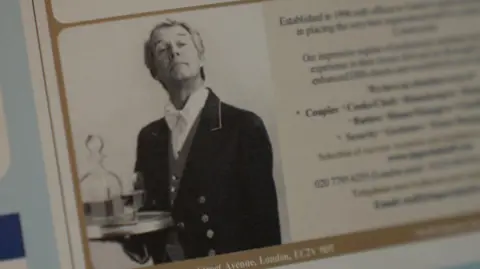
‘How to sack a servant’
Under Rita Shell’s control, it became a successful weekly guide to women who found themselves in charge of both a household and a budget to outsource the daily drudgery to the lower classes.
In December 1927, it cautioned young women “to become a good cook before you marry, darling. Then you will be competent to rebuke a staff of domestics or to dispense with one”.
Eighty years later, those concerns remained central. Editor Rachel Johnson was a firm believer in not being too familiar with staff, writing: “Never sit in the kitchen chatting to your nanny, it’ll end in tears before bedtime.”
And even today there are still pages of classified adverts for livery workers and other assorted varieties of domestic help but the demand now is more for live-in carers for the elderly than butlers or nannies.
Rebranding The Lady
That age profile has long been a concern. In 2009, Johnson was taken on to give the magazine a more youthful rebrand. She was asked to halve the average of the reader, which was, when she started, 78.
A Channel 4 documentary revealed it was not universally welcomed, and Johnson’s diaries later catalogued all the difficulties of aiming articles at younger readers amongst adverts for walk-in baths and absorbent underwear along with products to remove their associated odours. It was an eventful three years that made more than a few headlines.
Nevertheless, while the readership did briefly increase, like most print magazines, sales have been in sharp decline in recent years. Once a weekly, it went from fortnightly to monthly. The last published figures in 2023 revealed it sold just under 18,000 copies an issue.
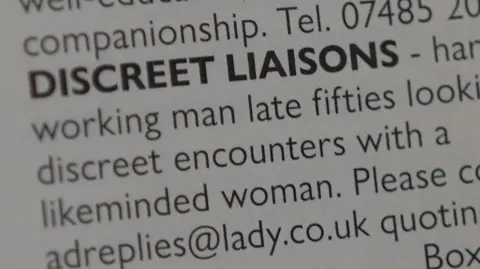
Custard creams in the safe
And while the website will continue, it is the end of the line for a very distinctive bit of British culture.
The current owner of the Lady, the great grandson of the founder, Thomas Bowles, Ben Budworth has spent 17 years trying to keep it afloat.
He took over the running of the magazine in 2008 and over saw the controversial rebrand. His decision to sell off the Covent Garden offices and move production to a business park in Borehamwood in Hertfordshire was met with protest.
The premises on Bedford Street were a seen by many of the staff as more than just another office, they helped define The Lady’s character.
No one had a direct phone line. Instead, calls all went through a telephonist. One former editor said work would stop at 2pm to listen to the Archers, and again at 3:30pm for tea.
Johnson said the wall safe was where the tins of custard creams were stored. One particular perk was her own peach-coloured WC. Each day she would be handed two freshly laundered towels.
The building was a reminder of its long history and the magazine’s many contributors, among them Lewis Carroll, Nancy Mitford and Stella Gibbons, who while giving the impression of being hard at work wrote Cold Comfort Farm in the magazine’s offices.
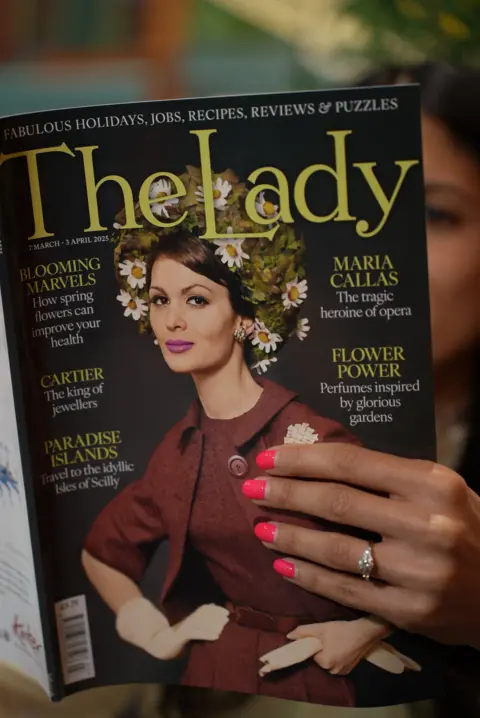
The L word
However, heritage does not pay bills. Problems with a tax demand made headlines in 2024 and suggested the move to Hertfordshire had not solved the financial woes. The problem of the shrinking and ageing readership was never going away.
Even the word lady has shifted over the years from being an aspiration to a term widely regarded as demeaning and disparaging.
And while there are older magazines, such as The People’s Friend (which did not begin as a magazine aimed specifically at women) and the American Harper’s Bazaar which absorbed the even older British stalwart Queen, the Lady has a good claim on being the UK’s oldest surviving women’s magazine.
However, 140 years on, a magazine that once billed itself as an indispensable guide to society has found that society has moved on.


